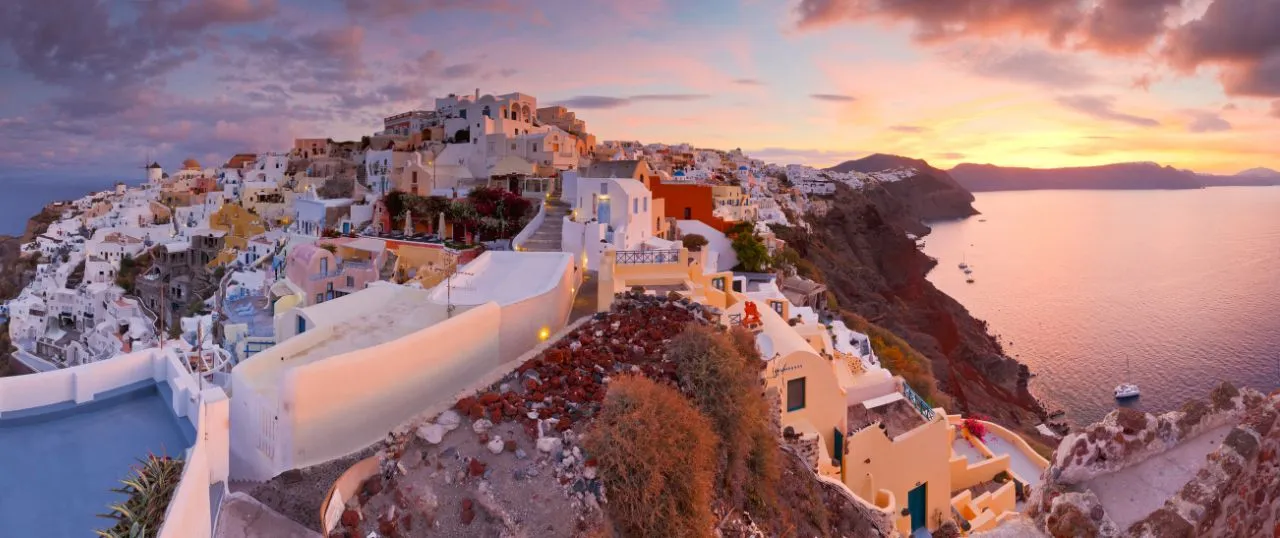For most people, Greece is the perfect blend of idyllic stretches of golden sand lapped by clear-blue water, explorable Ancient sites, world-class museums, bars and tavernas. But, of course, there’s more to Greece than the perfect holiday, and one of the things I found over the years is the number of fun and interesting facts about Greece that most people just did not know.
So, here are (what is sure to be a growing list) my top 20 of the most interesting facts about Greece you don’t know.
80% Of Greece is just mountains
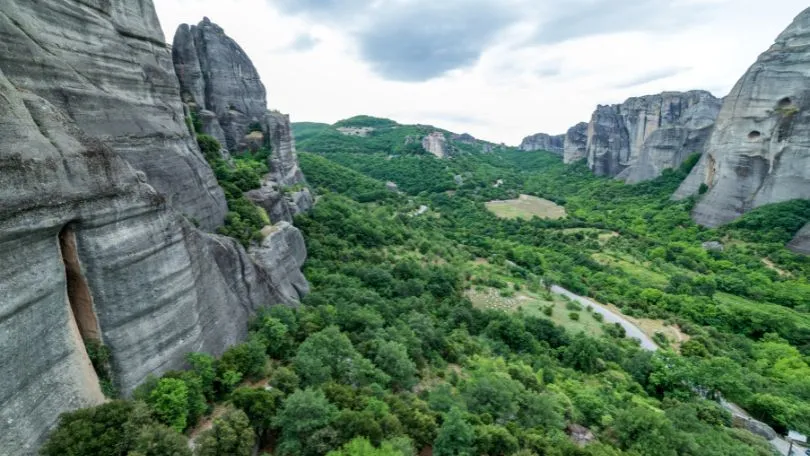
Even though the country is mainly known for its islands and seas, a whopping 80 percent of Greece is made up of mountains. At one end of the country’s backbone are the peaks of Varnountas and Grammos. You’ll find the Pindos range and legendary Olympus at the other, just north of the verdant Pelion. Further south, down to Taygetos in the Peloponnese and on to Asterousia in southern Crete, you’ll find even more natural beauty that will leave you gasping in awe.
The mountains have been revered by people for centuries. In ancient times, they were seen as the homes of gods and goddesses. Today, Greeks see them as a place to escape the city life’s hustle and bustle.
Each year Greece has three times more tourists visiting than its entire population

Second on my list of the most interesting facts about Greece you don’t know is how many more people visit Greece than live there. Greece is a top travel destination for millions of people each year. Over 31 million tourists visit Greece annually, which is almost triple the total population of Greece of 11 million. It’s one of the only countries in the world with tourist numbers that double its population. Tourism makes up around 20% of Greece’s GDP, which is also one of the highest percentages of any industrialised country.
Greece has more than 6000 islands, but only 227 are inhabited

Did you know that Greece is home to over 6,000 islands? And of those, only 227 are inhabited. The largest inhabited island is Crete, with a population of 630,000; the smallest is Kythira, with just 3250. The largest uninhabited island is Agios Georgios (Greek: Άγιος Γεώργιος) or San Giorgio.
Almost everything about western culture comes from Greece

Essentially, everything that makes Western culture tick can be traced back to Greece. That’s where democracy was born, and Western philosophy and political science originated. Not to mention actual science and mathematics, history writing, the Olympic Games, and even drama and dramatic principles. Thank you, Ancient Greece; we appreciate it.
Greece has 18 UNESCO World Heritage Sites

The UNESCO World Heritage Sites are designated as being of outstanding universal cultural or natural heritage value. These sites are nominated by countries that have signed the UNESCO World Heritage Convention. How many of these can you recognise?
- Temple of Apollo Epicurius at Bassae
- The archaeological site of Delphi
- Acropolis of Athens
- Mount Athos
- Meteora
- Paleochristian and Byzantine monuments of Thessaloniki
- Sanctuary of Asklepios at Epidaurus
- Medieval City of Rhodes
- The archaeological site of Mystras
- The archaeological site of Olympia
- Delos
- Monasteries of Daphni, Hosios Loukas and Nea Moni of Chios
- Pythagoreion and Heraion of Samos
- Archaeological Site of Aigai (modern name Vergina)
- The archaeological site of Mycenae and Tiryns
- The Historical Centre (Chorá) with the Monastery of Saint-John the Theologian and the Cave of the Apocalypse on the Island of Pátmos
- Old Town of Corfu
- Archaeological Site of Philippi
About 36% of the population of Greece lives in its capital Athens
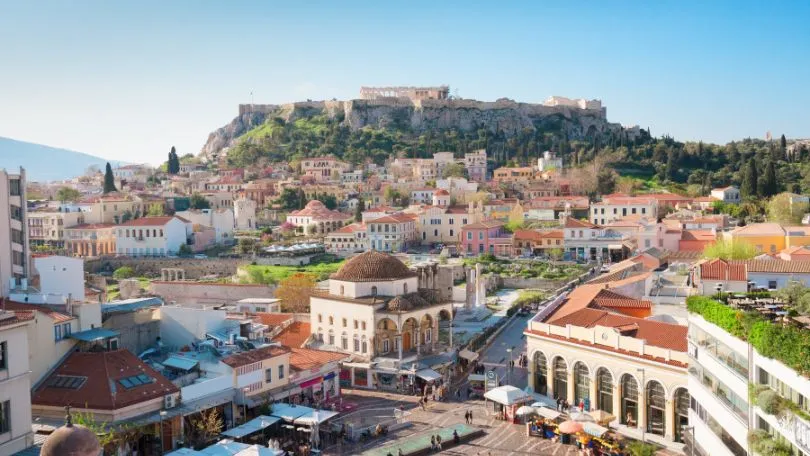
Fifth on my list of the most interesting facts about Greece you don’t know is that whilst Greece has a population of around 11 million, the number of those living in its capital city Athens is about 4 million. So, you don’t need to be a maths genius to figure out that’s just over 36%.
No place in Greece is more than 85 miles (137 km) from the sea
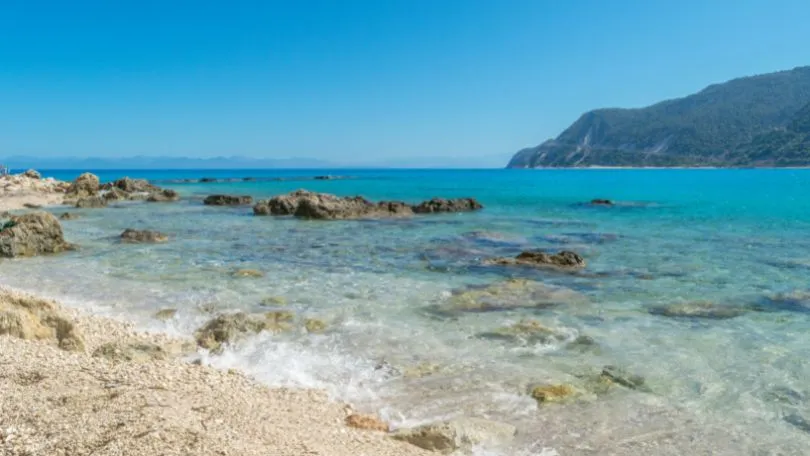
Greece is an incredibly unique and interesting country, not only for its picturesque views but also for its fascinating history and geology. For example, did you know that no point in Greece is more than 85 miles (137 km) away from water?
That’s because Greece was once a mass of rock that was completely underwater. But when a tectonic plate crashed into Europe, the collision created Greece’s mountainous ranges. And that very same tectonic plate is still moving today, which causes earthquakes all around the Aegean. So just remember that next time you go for a dip in the sea.
Greece has the longest length of coastline in the Mediterranean

Greece has a coastline of 9,498 miles (13,676 km), the longest coastline in the Mediterranean Sea Basin. The country has the third longest coastline in Europe. So, assuming you walked about 10 miles daily every day, it would take around three years to complete.
Greece isn’t called Greece by the locals
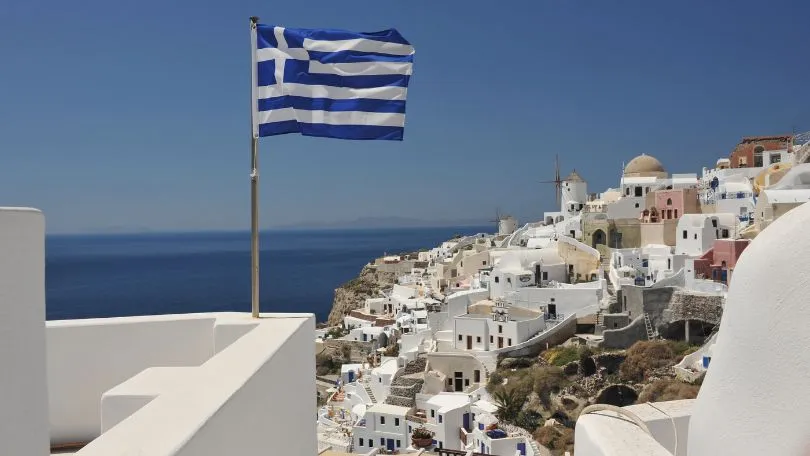
The locals of Greece use the names Hellas or Hellada and have been doing so for centuries. Its official name is the Hellenic Republic. ‘Greece’ was adopted by the Romans (as the Latin word ‘Graecus’). If you are at a sporting event when Greece is competing, you will more likely hear the word “Hell…las” being chanted instead of “Gre..ece”. In English, however, the country is usually just called Greece. This comes from the Latin Graecia (as used by the Romans) and literally means ‘the land of the Greeks.
Greece has more than 10,000 traditional dances
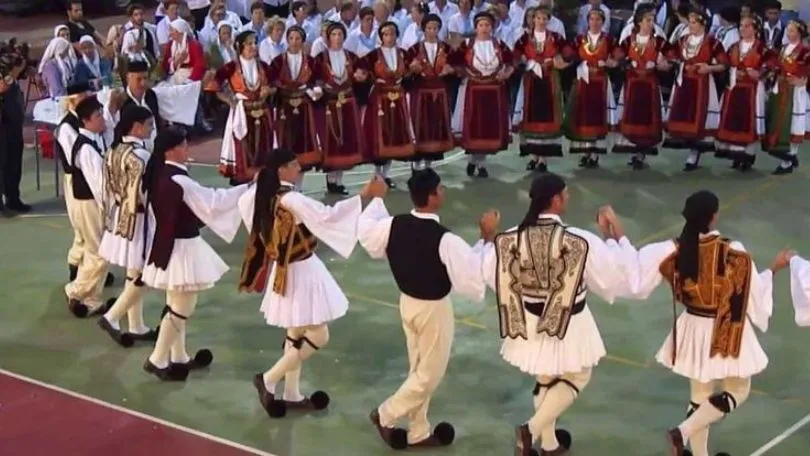
Greek dance (horos) is an ancient tradition with references dating back to Plato, Aristotle, Plutarch and Lucian. There are more than 10,000 styles from all islands and surrounding mainland areas. Each region has its own style to fit in with its own ways.
For example, island dances have a smooth flow, while Pontic dances closer to the Black Sea are very sharp. The most popular ones include the syrtaki, a slow and sensual dance, and the kalamatianos, a fast and energetic dance.
Greek dancing has a strong social element as its a way for the community to come together at important times of the year, such as Easter. It can also mark key moments in people’s lives, such as weddings. Often, tradition dictates a strict order for the dancers based on factors like age.
Greece is one of the sunniest places in the world
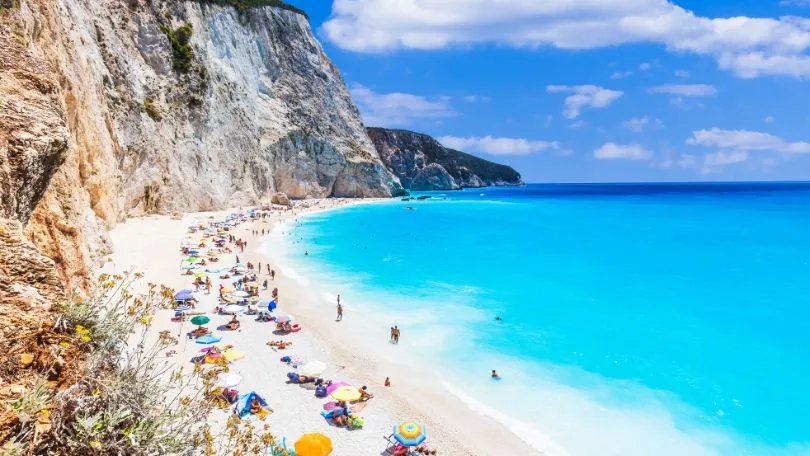
If you find yourself chasing the sun like me, you’ll love Greece. With an average of 250 days of sunshine or 3,000 sunny hours per year, it’s one of the sunniest countries in the world and the sunniest in Europe.
Greece is large and has a diverse topography, so there are many different climates. For the most part, the weather follows a typical Mediterranean climate pattern with hot, dry summers and mild, rainy winters. Greece has only two seasons: hot and dry between April and September; mild and wet from October to March. Sunny days are frequent, and prolonged stretches of rainy weather are uncommon.
The yo-yo was invented in Greece

The yo-yo is a fascinating toy with a long history. It is believed to be the second-oldest toy, dating back around 2500 years. The first yo-yos were made of wood or terra cotta and were found in ancient Greece. Some of these ancient yo-yos are displayed at the Greek Archaeological Museum in Athens.
These yo-yos were often decorated with pictures of Greek gods. As children entered adulthood in antiquity, it became a tradition to place their yo-yos on the family altar as a rite of passage. Today, the yo-yo is still enjoyed by people of all ages and continues to fascinate us with its simple yet intricate design.
Greek is the third oldest (still spoken) language in the world

The Greek language has been spoken for more than 3400 years, and the Alphabet was first written about 2800 years ago. It evolved significantly over the centuries, but it is still possible to trace its roots back to the time of Homer. His works are believed to have been composed between the seventh and eighth centuries BC, making them some of the oldest surviving examples of Greek literature.
In case you are wondering what the photo says. well, that’s Greek for “Do you speak Greek?”
There are places in Greece you can’t wear high heels

Confused about this one? I know I was when I first heard it, but it’s actually true. It might sound a bit weird initially, but it makes sense. It’s all about when visiting specific ancient sites and temples in Greece. Well, you can’t wear high heels in some of these places simply so that you don’t end up creating cracks in the stone with the heel and damaging places with such a rich history. Anyway, who enjoys a day of exploring and walking around in high heels anyway? I know I don’t.
Name days are almost as big as birthdays

What’s better than having one day of the year about yourself? Well, it’s having two days. In Greece, lots of Greek names come from religious saints, and each of these saints is celebrated by the church on a specific day. On that day, people with the same name as the saint are wished a happy name day and throw a party with family, friends and neighbours.
The vast majority of Greek names, both male and female, are celebrated on the same day every year; a few are the so-called floating name days or movable days. These days are associated with Easter; therefore, you should always check the year’s calendar to see these specific days.
The “Evil Eye” is the most common superstition among Greeks
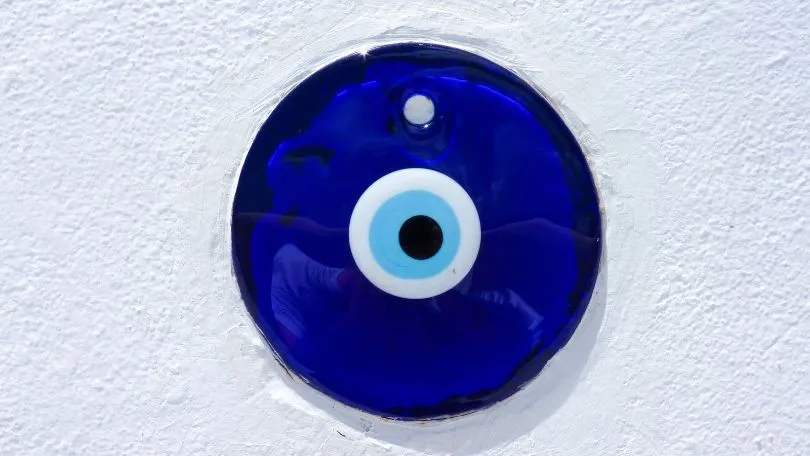
When looking for gifts and things to take back home from your holiday to Greece, you often see what looks like a blue eye on many souvenirs. This is known as the evil eye and is more commonly known by the locals as “mati” (μάτι) in Greek culture.
The mati is a curse thought to be given by a malicious glare that can cause bad luck or loss. You may have heard someone giving you the ‘evil eye’ from across the room – and many people worldwide believe this to be more than just a saying.
People can knowingly wish negative thoughts on you. Still, the power of the eye is that some people unknowingly and innocently cast a curse on others. That’s why it’s important to wear an evil eye somewhere on your body to ward off this curse and protect yourself throughout the day.
There are only ten pink beaches in the world, and Greece has two of them
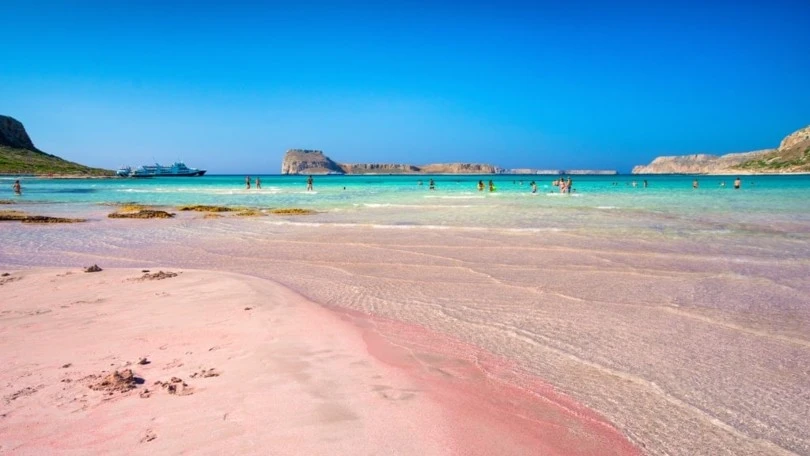
Yes, you did hear that right…there are only ten pink beaches in the world, and Greece has two of them. They are Elafonissi Beach and Balos Beach, and they are both on the same island of Crete.
The BBC has named Elafonissi beach one of Europe’s best ‘secret’ beaches. Elafonissi itself is a small islet separated from the Cretan shore by a lovely, warm, and shallow lagoon not more than a meter deep.
The sand in Elafonissi is a glistening pink hue that changes in intensity depending on the weather, the tide, and the condition of the water. It is always some shade of pink, however, with a velvety, smooth texture that makes it unique.
Balos’ pink beach is a truly unique and beautiful sight. Its sand mixes glossy white and pink hues with turquoise, emerald, and white-blue waters. The rocky outcroppings are also a stunning sight.
This lagoon is located in the northwest part of Crete, near the port town of Kissamos, in the Chania region. Balos consists of a cluster of tiny bays around a vast strip of sandy land. This segmented beach is what gives it its range of colours, including blue, pink, white, and green.
It’s common for family units to live together for a long time
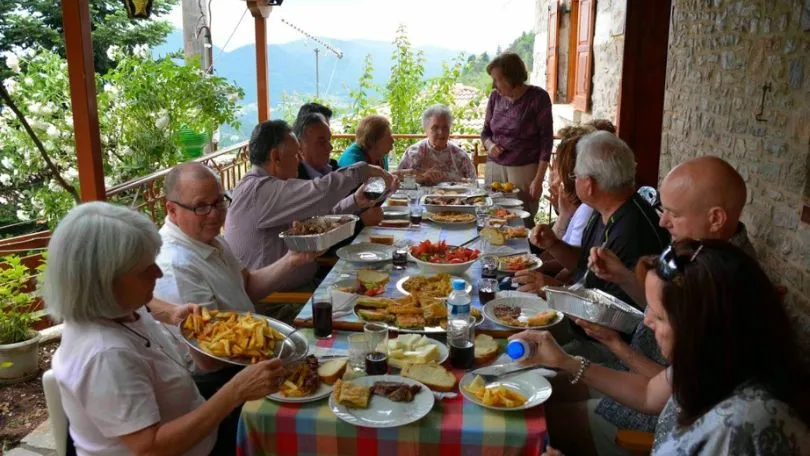
Unlike many other cultures, Greek children don’t move out when they’re in college or starting their first job. Instead, Greek children usually stay with their parents until they get married, so they can create their own family unit.
Furthermore, seniors also move back in with their children (and, in some cases, grandchildren) and stay with them until their last day. I quite like this way of things; perhaps this explains why you don’t find many nursing homes in Greece.
Why are doors in Greece painted blue?
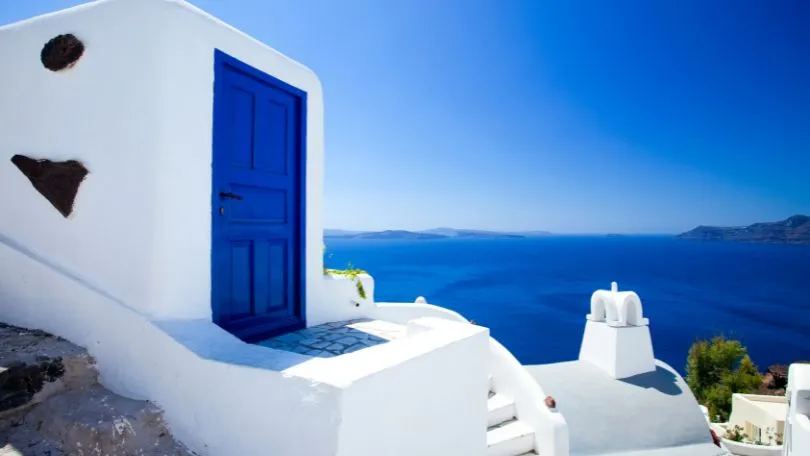
The beautiful blue-and-white buildings on the Greek islands are some of the most iconic examples of Greek architecture. We’ve all seen them…the famous shade of blue doors on white buildings. This style is especially prevalent on the Cycladic islands, where each island has its own unique cultural trademark.
For instance, Tinos is known for its marble architecture. At the same time, Milos is famous for its houses with first-floor garages for storing boats during wintertime.
Some people believe that this colour palette is linked to the superstition that blue wards off evil, just like the blue on the evil eye symbol.
Others think it’s because after the coup of 1973, the doors and houses were painted in the colours of the Greek flag.
Today, the reason why this white and blue colour is still debated and argued over. But whatever the reason, there is no doubt that the white of the houses, combined with the blue of the Aegean Sea, form an idyllic sight that we will never get tired of.
More than 150,000 words of English come from the Greek language of Greece
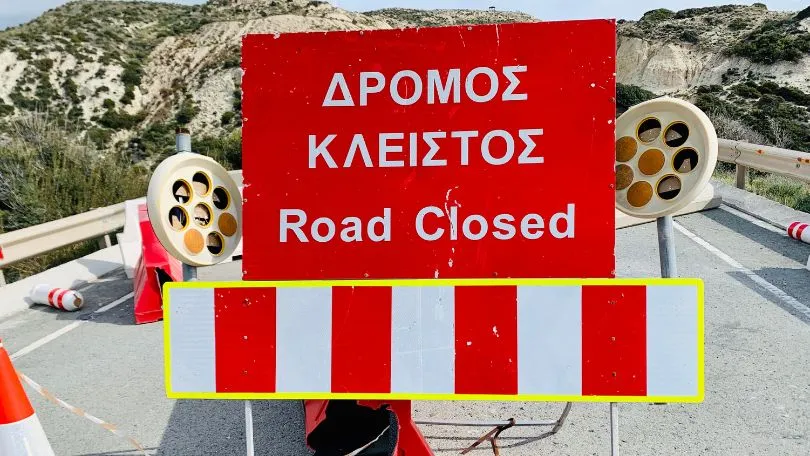
The Oxford Companion to the English Language states that, according to one estimate, more than 150,000 words of English are derived from Greek words. These include technical and scientific terms but also more common words. Perhaps this will spur you on to learn the Greek language as you know so much without realising it.
In conclusion
Well, there you have it, my guide to the top 20 of the most interesting facts about Greece you don’t know. Although, now I guess the title of this blog is wrong, as you know them now.
Thanks for taking the time to read this blog.

